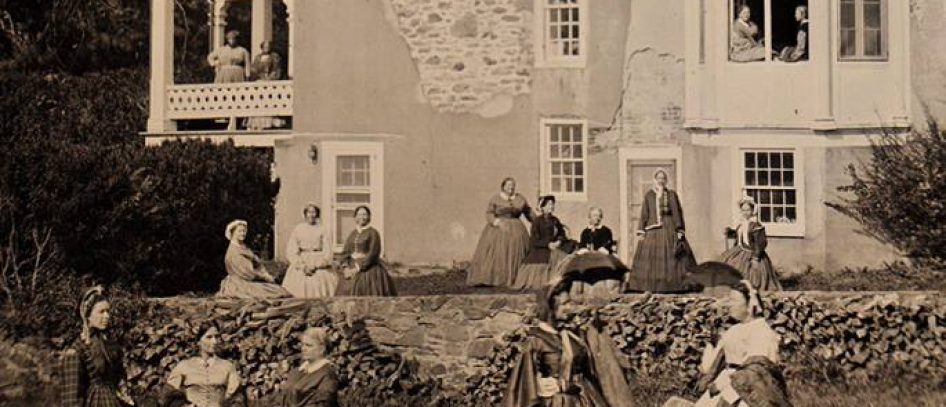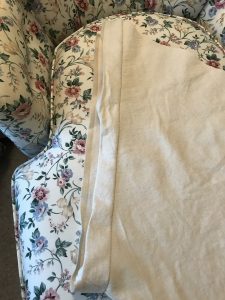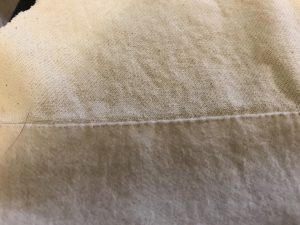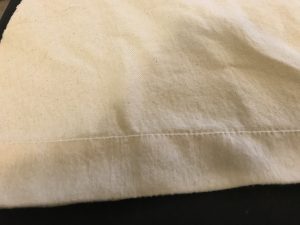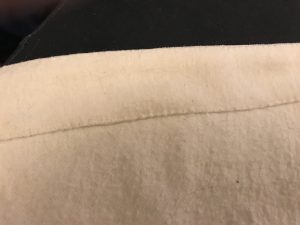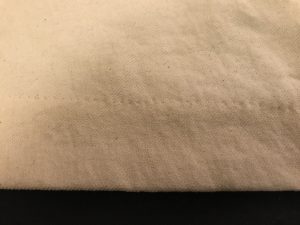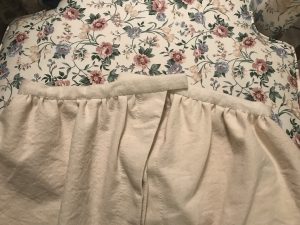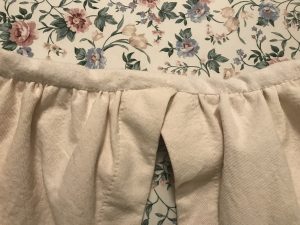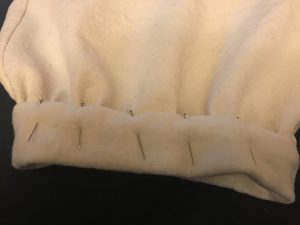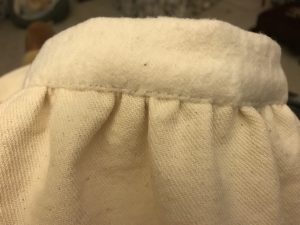The next item of necessity in my winter wardrobe is a pair of canton flannel drawers. As a reminder, I plan to attend an event in Vermont in February with some outdoor activities, so need warm underthings. I have made a quilted hood, wool petticoat and plan to make wool stockings, a muff and, if I have time, over mittens.
Canton flannel, so called from where it was first produced, is a plain, or more common, twill weave cotton with a long, fleecy nap or flannel on one side. In the 21st century you will find a poly/cotton blend of canton flannel used for buffing wheels. When constructing undergarments with canton flannel, the flannel side is against your skin and the twill weave is on the outside.
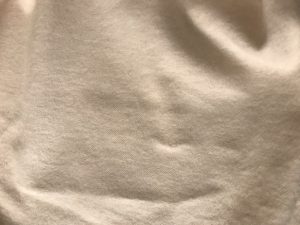
If you have a well-fitted pattern, drawers are one of the easiest period wardrobe pieces to produce. I used a pattern drafted in a Genteel Arts class conducted by Carolann Schmidt. One minor change was needed as flannel drawers were bond at the bottom of the legs rather than left open. I hand stitched the drawers as I prefer to hand sew, just a personal preference.
I did make one error in my drawers as I did not cut them on the fabric fold. Not too big of an issue but did result in a loss of an inch of ease in the leg and not true to period drawers.
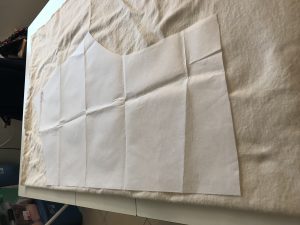
The first step is to create the legs. As mentioned, I failed to cut the legs on the fold so have two seams in my leg pieces; the side seam should have been on the fold. The seams are felled to prevent ravelin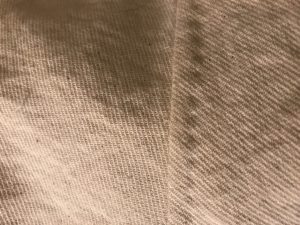 g.
g.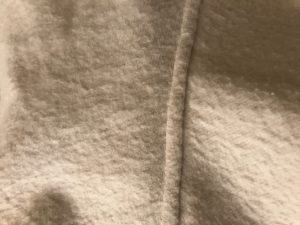
Once the legs are sewn a facing is placed on the inside, encasing the crotch opening, to the waist, front to back. Once the facing is attached but before it is turned to the inside, an over stitch is sewn close to the seam to prevent the facing from rolling over the seam. The flannel is on the outside of the facing to be next to the skin.
C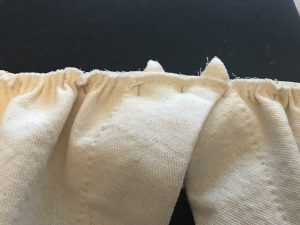 arolann’s instructions for the drawers call for the waist opening to be at the back; however, I prefer mine to open in the front. The legs are
arolann’s instructions for the drawers call for the waist opening to be at the back; however, I prefer mine to open in the front. The legs are 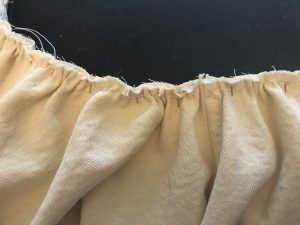 basted together at the waist, overlapping the width of the facing. The waist is then gathered to fit the waist band. Remember the flannel is against your skin, so the flannel is on the outside of the waistband. The waistband is attached to the drawers and folded over to the front where it is topstitched.
basted together at the waist, overlapping the width of the facing. The waist is then gathered to fit the waist band. Remember the flannel is against your skin, so the flannel is on the outside of the waistband. The waistband is attached to the drawers and folded over to the front where it is topstitched.
A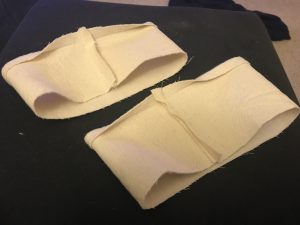 s mentioned above, flannel drawers are bond at the bottom of the legs to prevent cold air up the legs. I followed basically the same technique used on the waist band to bind the leg bottoms.
s mentioned above, flannel drawers are bond at the bottom of the legs to prevent cold air up the legs. I followed basically the same technique used on the waist band to bind the leg bottoms.
Add a buttonhole and a button and we have a pair of flannel drawers. And they do feel nice against the legs. I am sure these will be nice and toasty in a Vermont February.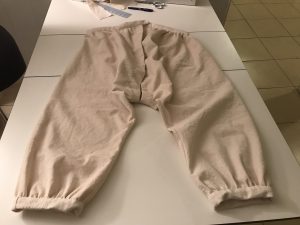
Categories: Civil War
